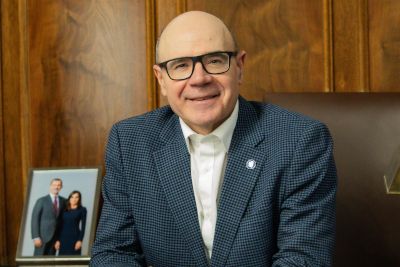
On behalf of the University of Granada, I warmly welcome you to our website. I encourage you to use this virtual space to become acquainted with the UGR, learn about the different procedures at our institution, and discover the latest developments in the fields of management, research, teaching and culture. This space represents the gateway to an institution that is open to the university community and to society in general.
We are now approaching the celebration of the fifth centenary of our university, founded in 1531. This is undoubtedly one of our key strategic projects, and this space will also provide all the information related to this commemoration.
Our aim is to offer a website with the best possible design, particularly in terms of usability. This calls for a sustained and ongoing commitment from us to be responsive and attentive to the needs and suggestions of our users.
The UGR community is made up of more than 56,000 students at undergraduate, master’s and doctoral level, of whom over 3,200 come from abroad and nearly 25,000 from other Spanish provinces. In addition, we have approximately 3,800 teaching and research staff, and just over 2,500 administrative and support staff. This community reflects the richness and complexity of our institution — a diverse group of more than 63,000 people who, I can assure you, work hand in hand to make the UGR an equitable, inclusive and safe environment for all, regardless of socio-economic background and origin. This community enables the UGR to act as a driver of development capable of generating economic and social impact for society. It has also given rise to a university that is open to the world and that assumes international leadership through strategic initiatives such as the coordination of the Arqus European University Alliance.
The University of Granada is proud to be an integral part of the cities of Granada, Ceuta and Melilla. In Granada, the UGR is spread throughout the city and practically every district is home to university facilities, infrastructure, classrooms, laboratories or spaces. The four university campuses of Aynadamar, Cartuja, Fuentenueva and City Centre Campus, as well as numerous heritage and historical buildings, are distributed throughout some of Granada's most unique neighbourhoods. Likewise, the latest addition to the University’s heritage catalogue — the “San Isidro” Sugar Mill — is destined in the coming years to become the headquarters of the new UGR Sustainability Campus, a strategic and state-of-the-art project for the University and the city alike.
Beyond the capital, the province has also become a vast university space, thanks to the scope of the Open Learning Outreach Programme for Over-50s (APFA) and the "Centro Mediterráneo" Educational Outreach Centre (CEMED), not to mention the UGR's research and collaboration projects throughout the province.
I would like to conclude this message by conveying our firm intention — both mine, as Rector, and that of the UGR’s governing and management team — to always act in defence of the University of Granada and its community.
We are driven solely by the aim of improving the UGR and building a more democratic university, with a strong commitment to innovation, equality, and the elimination of inequality. In the same vein, we strive to continuously progress as an institution in the areas of teaching, learning, research, and knowledge transfer.
Rector of the University of Granada